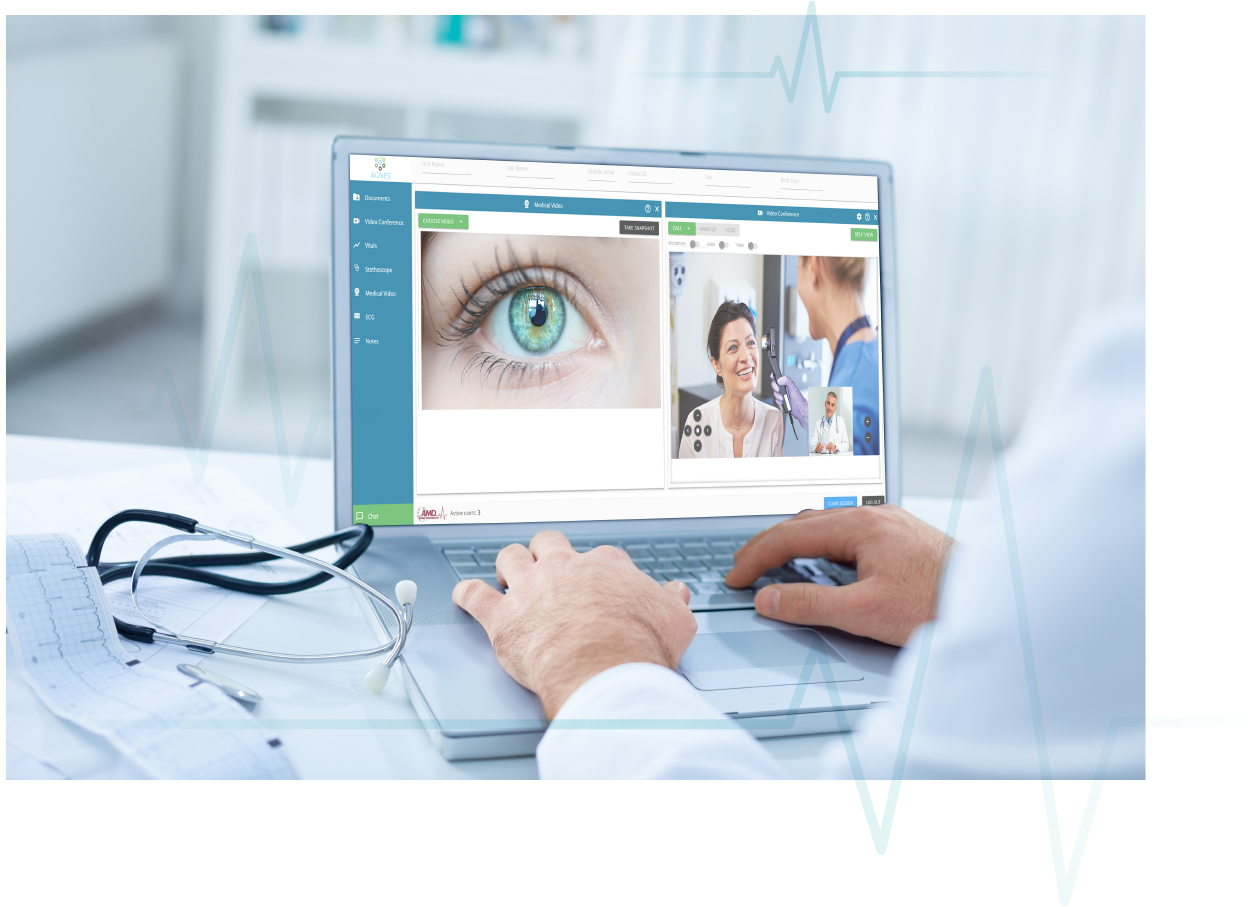Updated on Oct. 30, 2024
- The future of telehealth is evolving into a hybrid healthcare model that integrates telemedicine with in-person care.
- Telehealth technology and AI can enhance patient experiences by offering more convenient touchpoints and improving clinical evaluations through real-time data sharing.
- Device integration is key, allowing medical professionals to access subjective and objective patient data for more accurate diagnoses.
- As healthcare organizations adopt these innovations, they create more scalable, efficient, and sustainable telehealth systems.
Work isn’t the only aspect of modern life that’s benefited from a hybrid approach. Telehealth seems poised to move in that direction, too. And telehealth upgrades that will improve the overall telemedicine experience for both patients and healthcare organizations can’t come too soon.
Of course, the future of telehealth has recently gotten a kick-start. During the pandemic, consumers and medical personnel made incredible use of virtual appointments. According to the FAIR Health Monthly Telehealth Regional Tracker, telehealth visits rose 3,000% between November 2019 and November 2020. This telehealth trend continues today, with 54% of Americans surveyed by Public Opinion Strategies saying they’ve had a telehealth visit in 2024, yet its full potential remains largely untapped. What more can telehealth do beyond connecting patients with providers through video?
With the innovative use of integrated medical devices, telehealth can become an extension of in-person office visits and transform virtual care beyond just “talking heads.” In essence, it can turn healthcare into a hybrid experience that crosses geographic and time boundaries across the continuum of care for patients and providers. And just as hybrid work models have eased corporate life for professionals, hybrid medicine-telemedicine systems can prompt higher patient satisfaction. In fact, 89% of Americans who have used telehealth were satisfied with their most recent visits, according to the Public Opinion Strategies survey mentioned above.
Additionally, the value of data collected during virtual visits where medical devices are connected cannot be overstated. These interactions generate valuable data points that can be used for population health metrics, offering insights into public health trends and informing healthcare strategies. Data is incredibly valuable in today’s healthcare landscape, and leveraging this information can lead to better outcomes and more efficient healthcare delivery.
What are some other creative uses for telehealth to complement traditional in-person care offerings?

1. Making healthcare touchpoints more convenient
Telehealth technologies like AGNES Connect allow providers to connect with patients and address their conditions on the spot. These technologies also enable the sharing of medical device data, exchanging documents and images in real-time, and videoconferencing. Patients receive high-quality care without traveling out of their communities to and from appointments to see a faraway specialist.
More convenient care experiences make patients more likely to engage with providers, driving deeper loyalty and relationships. This convenience also helps establish a more predictable flow of revenue for healthcare organizations.
2. Improving the interactive clinical experience
With the integration of telehealth and AI devices, patients can play a larger role in their health, and providers can access more objective data. For instance, a patient’s vitals and heart-lung sounds can easily be “seen” from afar and shared in real time with a doctor for a true clinical evaluation. AI can help patients understand when telemedicine is suitable for their needs and when they need alternative care.
Furthermore, providers can selectively integrate medical devices to grow their telehealth programs into multiple specialties. They can also provide the best possible care because they always have access to informative diagnostics. Getting subjective data via a virtual appointment usually isn’t enough to make a clinical conclusion. However, coupling a patient’s subjective data with objective data from connected medical devices enables a more accurate clinical diagnosis.
3. Opening doors for pre- or post-care
Certainly, some situations and medical conditions can’t be addressed via telemedicine. Nevertheless, telehealth can be valuable even when used for pre-procedure screening, post-procedure care, or ongoing management of chronic conditions. As a result of the pandemic changing the way doctors see their patients, patients are now very comfortable relying on device-integrated telemedicine so their doctors can “see” them without being in the same room with them.
From the clinical side, providers have to train staff on fewer platforms when they use integrated telemedicine systems. After all, the same platform connected with integrated medical devices can be used for multiple specialties, levels of care, and use cases. This wide range of applications doesn’t require the provider to add more software or telehealth technology vendors to grow, either. A telemedicine platform licensing model based on the organization site — not the number of users, providers, or visits — is critical for scalability and financial sustainability.
The future of telehealth involves a hybrid model capable of improving patient satisfaction and extending access to care across medical specialties. Healthcare organizations must evolve beyond the video-only model with a device-integrated approach to realize this future.
Find out how AMD’s HIPAA-compliant, cloud-based AGNES Connect virtual platform with connected and fully integrated medical devices can help. Contact us today to discuss your telemedicine program requirements.





